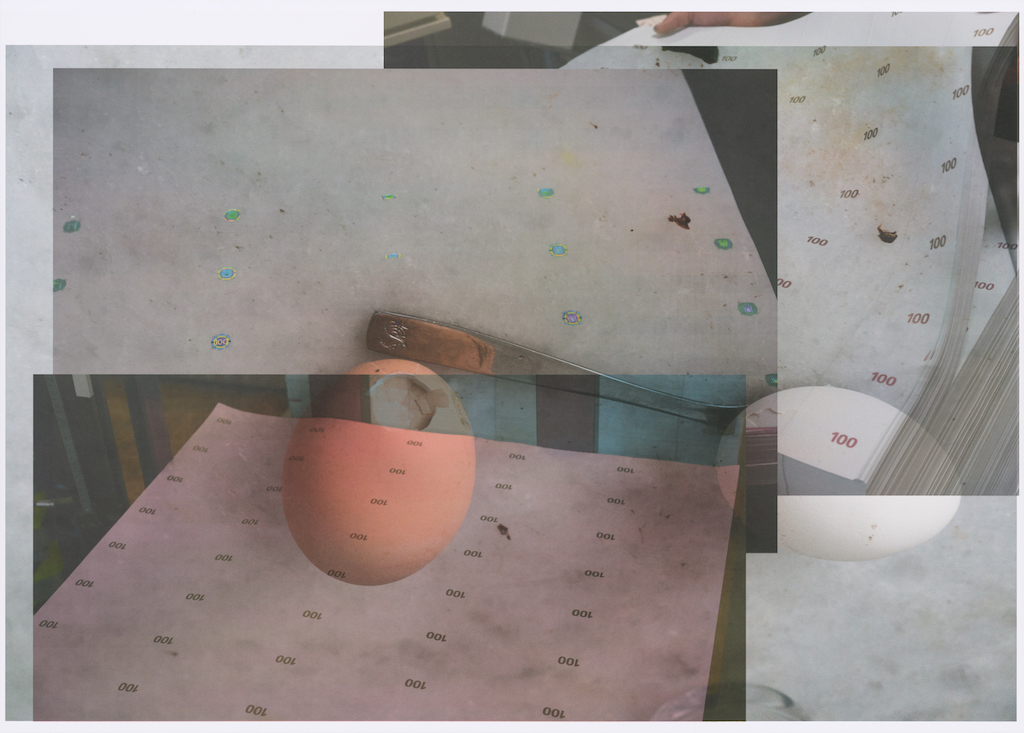[ad_1]
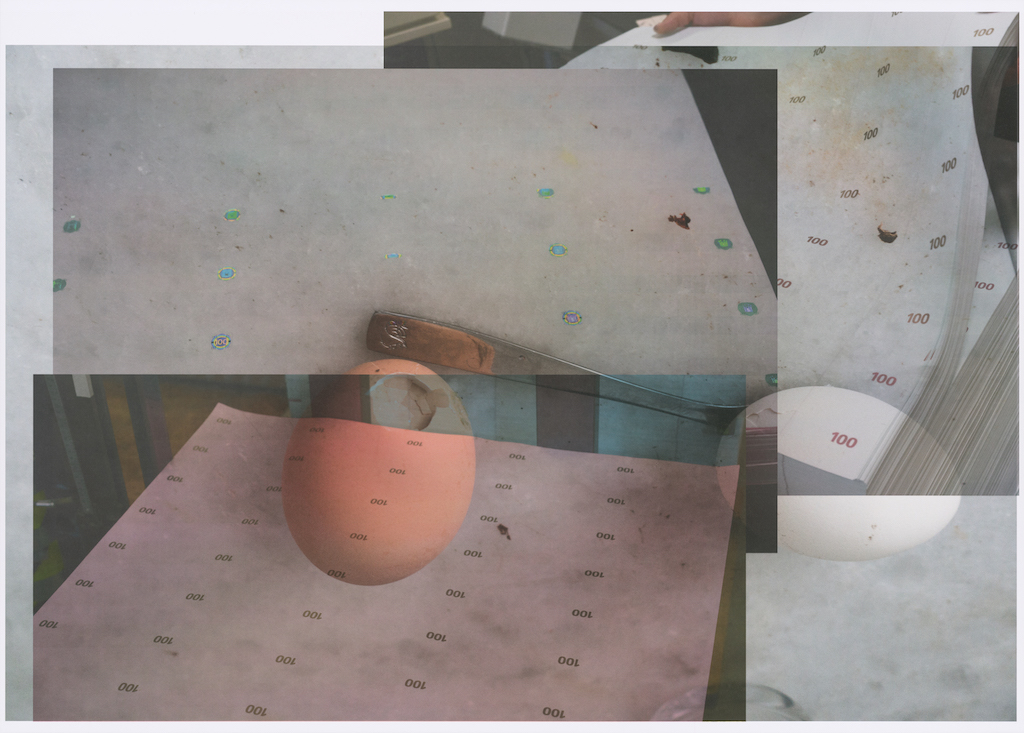
Wolfgang Tillmans, Philharmonie Bloch III, 2017.
©WOLFGANG TILLMANS/COURTESY THE ARTIST; DAVID ZWIRNER; GALERIE BUCHHOLZ, BERLIN AND COLOGNE; AND MAUREEN PALEY, LONDON
A swatch of fabric glimpsed in China, a member of the punk band Pussy Riot, the streets of Nairobi, the inside of a taxi door, the inside of a freezer, a flayed pig’s head, the Nile river, LED light bulbs, arrangements of eggs, sun-splashed beaches, a forest in Porto, Portugal—these are some of the many and disparate subjects of Wolfgang Tillmans’s 72 photographs currently on view at David Zwirner (through October 27). What hasn’t passed before his camera? It’s easy to accuse Tillmans of being all over the place and equally hard to deny how immediately affecting his exhibitions are. This show may be a mess, but it is as moving as anything Tillmans has produced.
Tillmans’s exhibitions are known for their unusual hangs. His last show at Zwirner, in 2016, featured landscapes, portraits, and still lifes arranged salon-style, floor to ceiling. The current one is slightly starker in its curatorial style—there’s a lot of empty wall space—but in keeping with his all-over approach to installation. In arranging his exhibitions in intentionally odd ways, Tillmans seems intent on drawing out connections—some of them highly personal—between what at first blush are unrelated images.
Taken individually, it’s tough to resist these photographs’ sumptuous compositions and soft, diffuse lighting, and their intimacy. Anna Drexler (2016) features a blonde woman in what appears to be a hotel hallway wearing just a white bra and a skirt; her back is turned toward the viewer as she rifles through her purse, but you can see that she’s smiling. The image smacks of late-night revelry, a stumbling-in after a few too many drinks. In the category of so-small-it’s-enormous, there’s Independence (2018), a nine-foot-long photograph of sea foam; you can scrutinize each bubble.
Behind all this beauty is a sense of anxiety: a discomfort with the ceaseless flow of pictures in today’s world. Eight photographs in the show digitally superimpose a range of images, such that pictures of nude male backsides, eggs, and stacked pages are transposed onto one another. One can imagine the ethical quandary Tillmans faces here: with so many images bouncing around, why bother producing more? His solution, it seems, is to advocate for a kind of photography that fosters a connection between its maker and its viewer. For one piece here that feels like a manifesto of sorts, Tillmans has reproduced fragments of an email conversation with a spammer named Klaus, who, it turns out, is actually a worker in Zhejiang, China, called Zhanghan. Toward the end of the conversation, Tillmans directs Zhanghan to his website, to which Zhanghan responds, “I like your website, there are many modern pictures and I like them. How to take a good photo? Special camera angle or some skill? I really really want to know.”
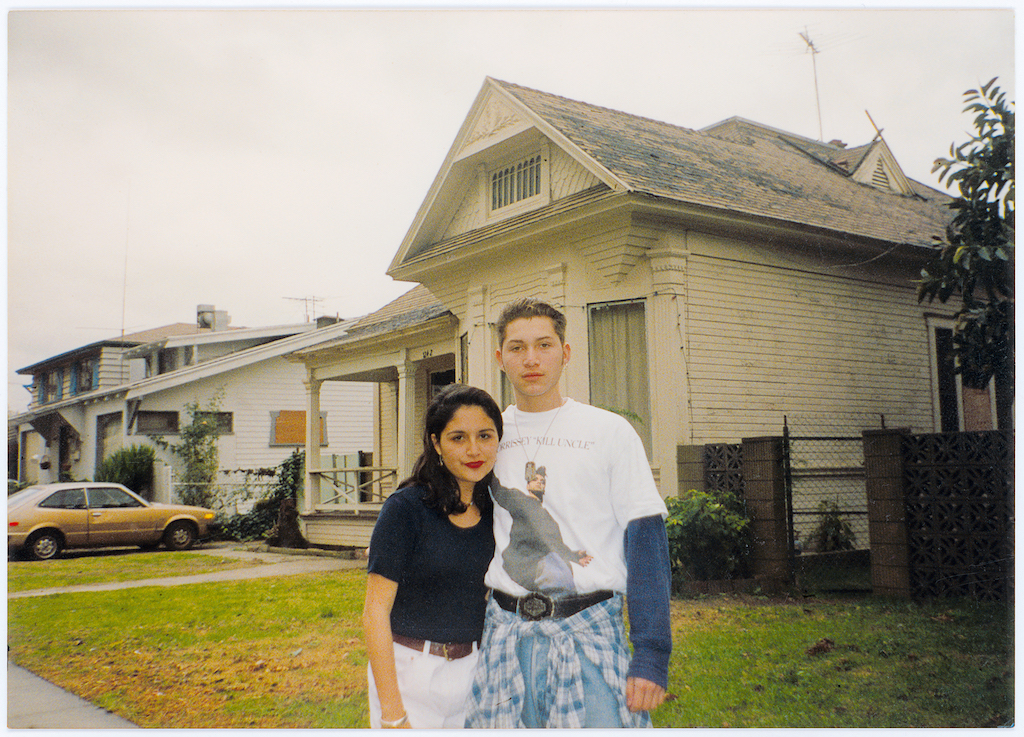
Photographer unknown, Booker (right) from the Together We Stand crew and friend (left) from Mind Crime Hookers, Whittier, California, ca. 1993.
COURTESY GUADALUPE ROSALES AND EILEEN TORRES
Tillmans’s influence can be felt in two New York shows this season that deal with archives and communities. One of them is Los Angeles–based artist Guadalupe Rosales’s exhibition at the Aperture Foundation gallery (through October 20), which features a selection of images and materials related to Latinx and Chicanx culture in LA. Over the past few years, Rosales has been collecting these pictures and posting them to two Instagram accounts, Map Pointz and Veteranas & Rucas, which have gained a cult following. Archiving these pictures, as well as brochures, zines, and publications, has become a way for her to ponder how the Chicanx community chooses to represent itself.
Rosales is highly attuned to the ways in which photography structures how we think about ourselves. The Aperture show may be limply curated (it’s too small to portray the epic scale of this project), but it nevertheless provides an insight into Rosales’s goal of resisting the portrayal of Chicanx and Latinx youths in the white mainstream media, where they often appear aggressive or violent. She displays a 1995 issue of the magazine Street Beat, left open to a spread featuring photographs of crews of Chicanx teens. Next to a picture of a group of young women casually posed on a low hill, the editors have written that one group is called the Criminals, a name meant as “a reflection upon the society in which these young Chicanos portray themselves.” Rather than being seen as “criminals straight out,” they are photographed as who they really are—“proud Mexicans with Chicano power.”
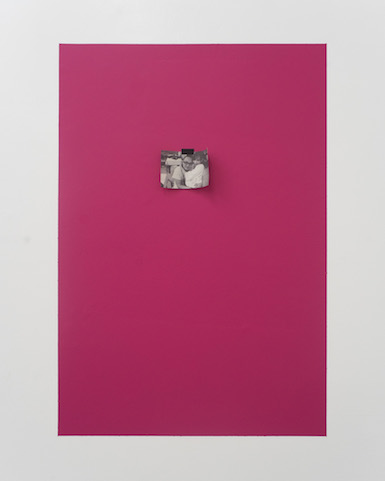
Hong-An Truong, Tín & Cát in Sài Gòn, 2018.
COURTESY THE ARTIST AND RUBBER FACTORY
Rosales’s experiments with representation are echoed by Hong-An Truong’s exhibition at Rubber Factory (through October 14), a sleek inquiry into the role photography plays in the writing of history. Loosely centered around radical leftist groups during the 1960s and ’70s, the exhibition reproduces posters and photographs associated with the Black Panthers and I Wor Kuen, a Marxist Asian-American collective; blemishes or folds in Truong’s archival materials are left visible. The photo-sculptures and prints on view evoke the sidelining of these groups in the mainstream narrative. They also play on the ways in which photographs are fragile, tenuous things—they get destroyed or come apart if not properly cared for. For the work Tín & Cát in Sài Gòn (2018), Truong has placed a tiny print featuring a girl holding a man who appears to be her father on a rectangle of magenta paint. It was held to the wall by a small piece of tape.
Truong’s chilly conceptualism finds a parallel in Essex Street gallery’s tight survey of the underrated artist Pati Hill (through October 21), who began experimenting with Xerox machines in the 1970s. Like Truong and Rosales, Hill, who died in 2014, was fascinated by the various methods by which certain people and things get preserved by photography in the digital age.
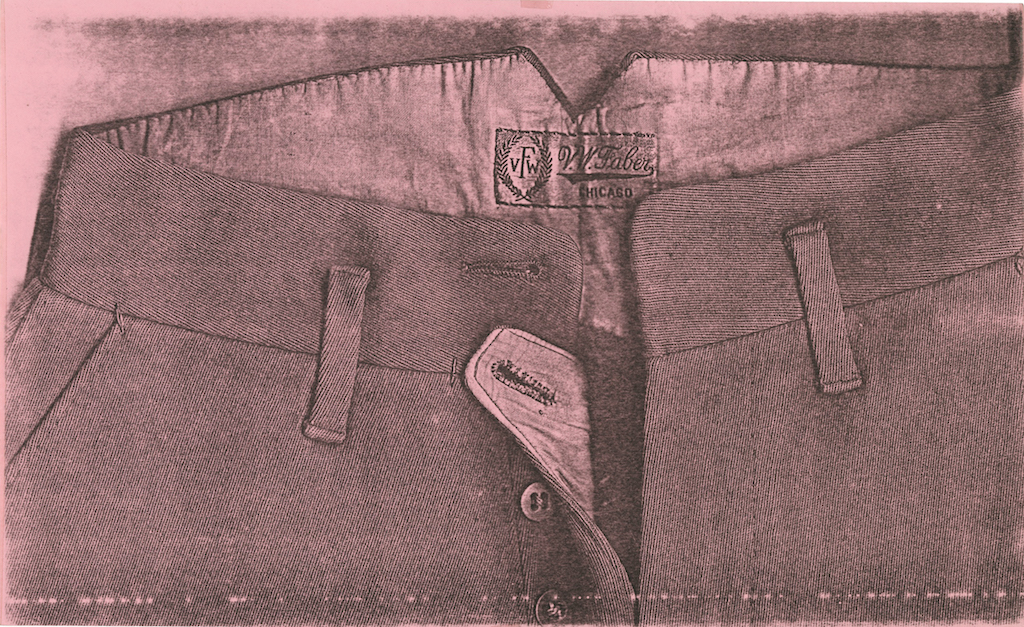
Pati Hill, Untitled (front of riding pants), 1976.
COURTESY ESSEX STREET
Her pictures, many of them black-and-white, are ghostly and strange—they feature gloves and other articles of clothing held against the scanner bed’s glass. These objects are posed frontally and appear slightly squashed, like flowers pressed into a notebook; their old-timey color scheme calls to mind daguerreotypes and other early forms of photography. Yet despite their dated look, Hill’s photographs are ultracontemporary. Like Tillmans’s works, they are melancholy meditations on the circulation of images in an increasingly digital world. Consider Hill’s photocopied images of empty train carriages that seemingly await passengers. These are, in fact, not pictures she herself took—they’re copies of anonymous photographs initially used in publicity campaigns. By xeroxing them, has Hill produced pictures that are more or less original than their source material? Does such a distinction even matter? Hill made ready-mades her own—sometimes that’s enough.
[ad_2]
Source link

